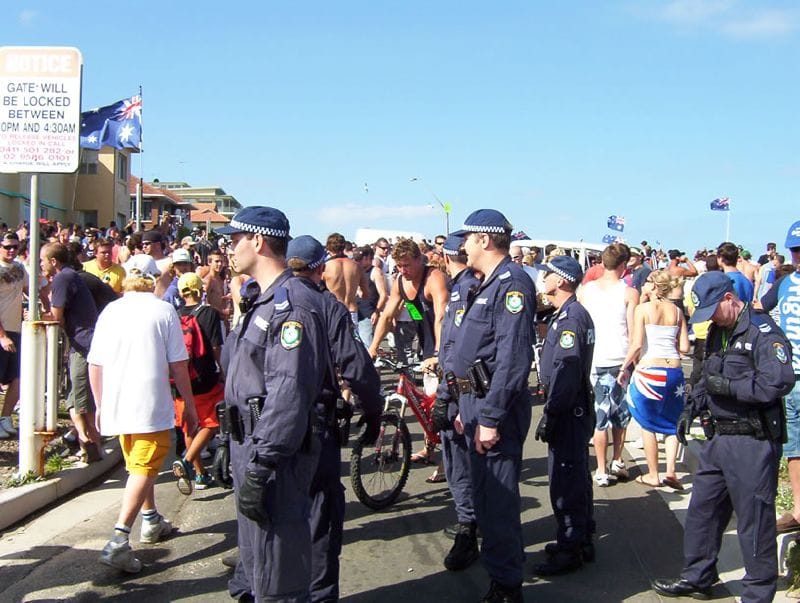
Melbourne is in the midst of long-term traffic chaos. Level-crossing removals, routine maintenance, road widening and the Melbourne metro construction have created a perfect storm of road closures.
There's hardly a corner of Melbourne that's unaffected, from Hoddle Street to Berwick, from the Swan Street Bridge to the Tullamarine Freeway. And with new road projects announced regularly, this storm is going to get worse before it gets better.
We’re pretty tolerant to short-term disruptions when we know they’ll result in long-term improvements to the transport network. But some of the disruptions for the Melbourne metro are unprecedented in scale and time frame. Last week, a third of St Kilda Road went from six lanes (plus four ‘lanes’ of parking) to two lanes – and it will remain that way for the next four years.
And so, once again, thousands of commuters will brace for years of congestion. But is that all we should be doing? Grit our teeth and count down the days until everything goes back to exactly the way it was before? Or have we been handed an unprecedented opportunity to transform St Kilda Road for generations to come?
Long-term changes
Road disruptions force people to change their travel habits. Short-term disruptions get short-term responses – people accept a longer commute, or leave a bit earlier, or try out the bus. But with significant, long-term disruptions, people rethink long-term changes. They might ask for flexible work arrangements, buy a bike or sell a car. Some businesses relocate, some people move home or change jobs.
But what happens when things go back to ‘normal'? Well, it depends on the new normal. If nothing changes, people tend to return to old habits. In Atlanta, the unexpected closure of a major bridge saw train ridership spike – only to return to normal after the bridge reopened.
If we look to Copenhagen we see a city that faced a familiar situation to Melbourne. In the mid-2000s, much of the city centre was ripped up to replace district heating pipes. Then Copenhagen started to expand its metro system – 17 metro construction sites ‘fell out of the sky all at once’. In a single year, the proportion of people driving into the city centre dropped from 27 per cent to 23 per cent, and cycling exploded from 36 per cent to 45 per cent.
But that rate of change can’t happen without help. Copenhagen has spent decades implementing safe cycling routes, traffic lights that prioritise cyclists and pedestrian-friendly streets. The road disruptions just provided the firm nudge to push more people out of cars and onto bikes.
But now that the construction boom is easing and roads are reopening, cycling rates are dropping back to 41 per cent – levels that most cities would envy. And without the new metro and expanded cycling infrastructure, it may have dropped even lower.
Imagine a precinct where people were encouraged to wander down from the NGV or across from the Shrine. Imagine St Kilda Road as a destination, not just a through-road.
So what can Melbourne do to take advantage of its construction growing pains? Yes, the ANZAC metro station will eventually be completed, but not until 2025. What should we expect from St Kilda Road when it reopens in 2022?
St Kilda Road is already one of our most majestic boulevards, with enormous potential. It's used by more than 3000 cyclists every day, making up more than 25 per cent of peak-hour road traffic but using only 5 per cent of the road width. It's also one of the most dangerous routes for cyclists and pedestrians, with 122 crashes involving bike riders and 74 involving pedestrians in only four years.
What if we had a new vision for St Kilda Road? What if we created Melbourne’s longest fully separated bike lane along its whole length? What if the sidewalks were widened to encourage street-level activity, instead o

f locking the action away inside the high-rise buildings? What if the speed limit was reduced to discourage people from using it as a through-road? Imagine a precinct where people were encouraged to wander down from the NGV or across from the Shrine. Imagine St Kilda Road as a destination, not just a through-road.
This vision would come at a price – it would require sacrificing some of the four parking lanes and six vehicle lanes. So far the state government has been reluctant to make that sacrifice.
If St Kilda reopens in 2022 with the exact same layout we've had, we'll see exactly the same traffic snarls and the same road deaths.
If Melbourne can survive four years with only two traffic lanes, perhaps it can survive a new vision for St Kilda Road.





